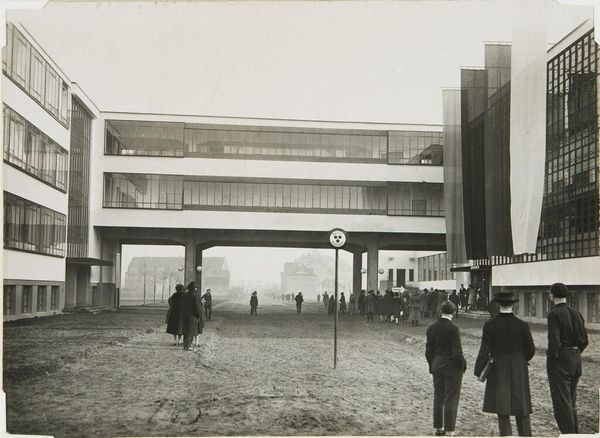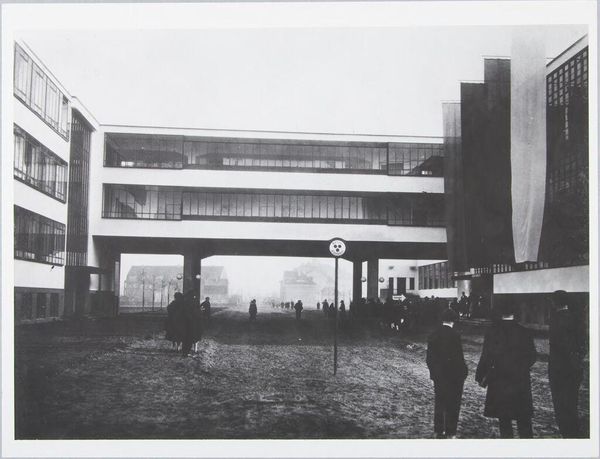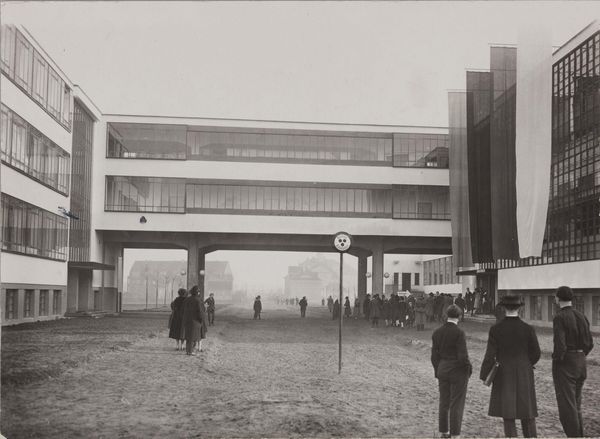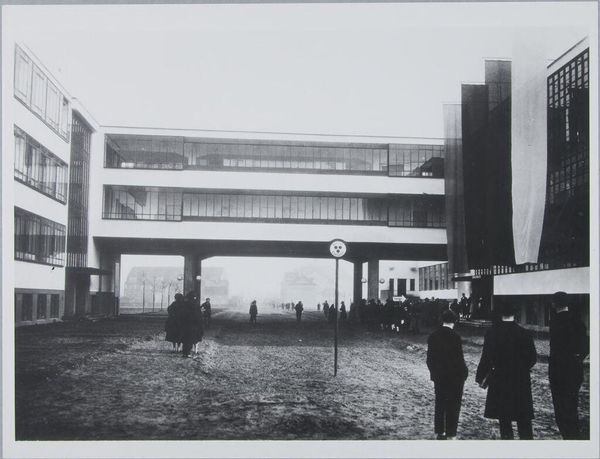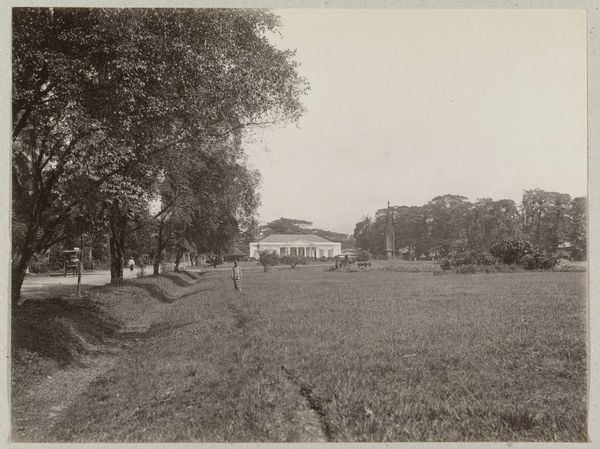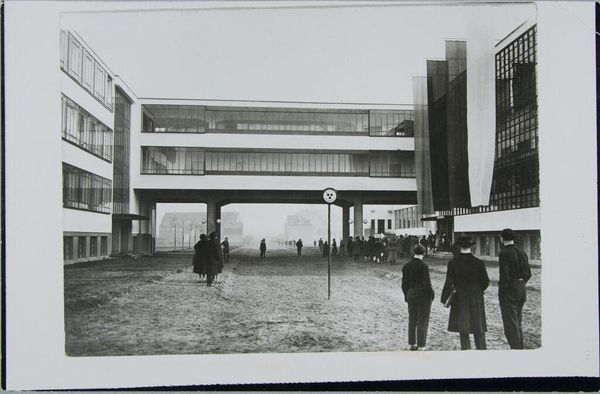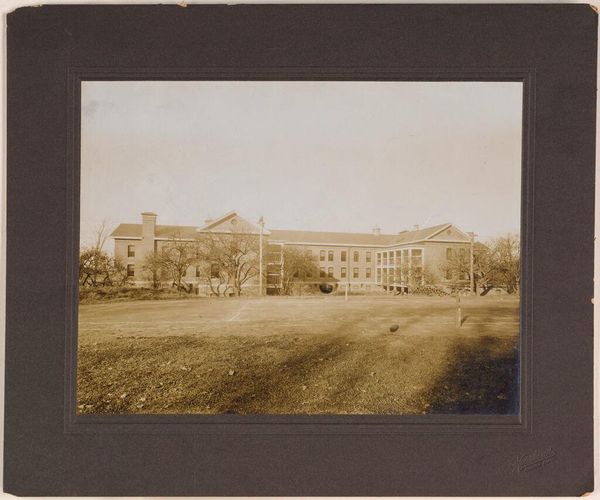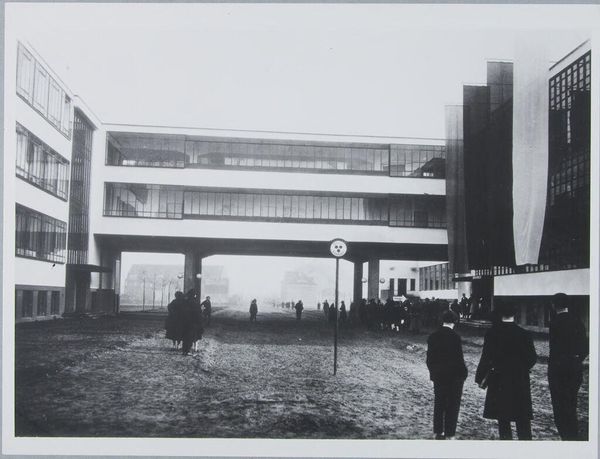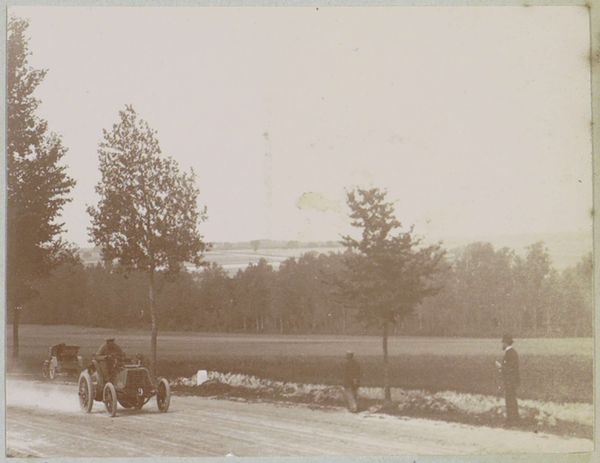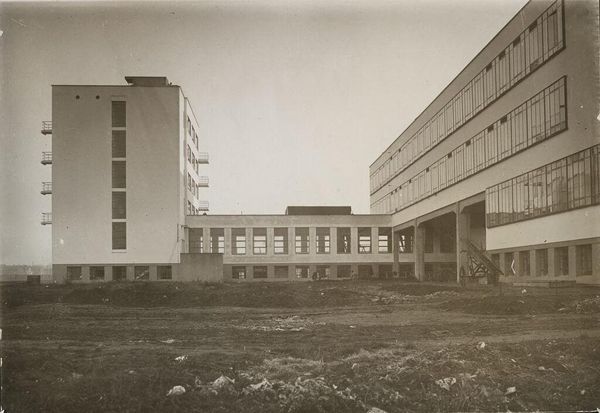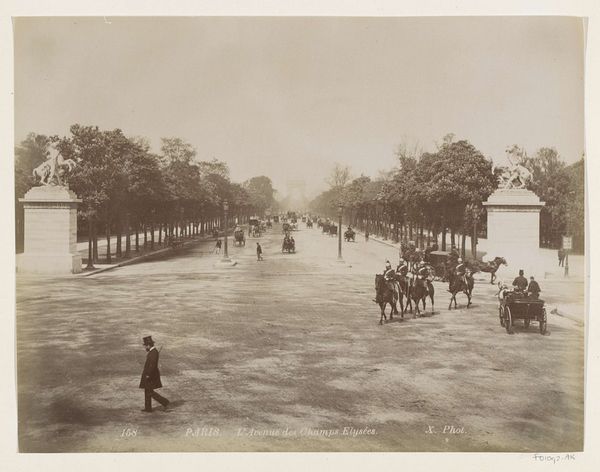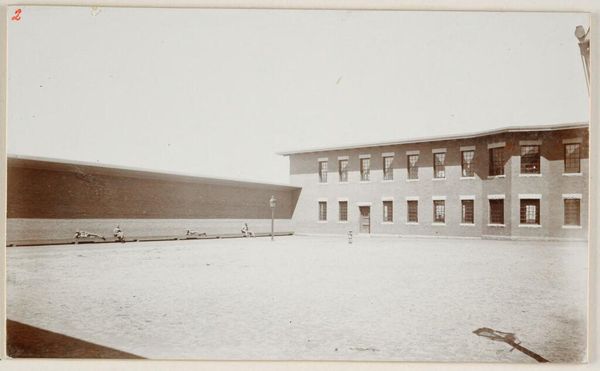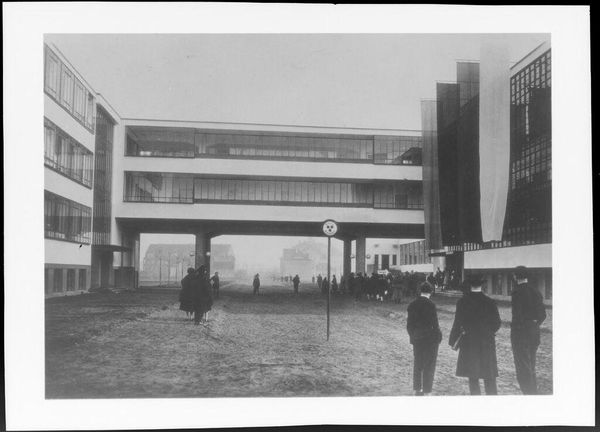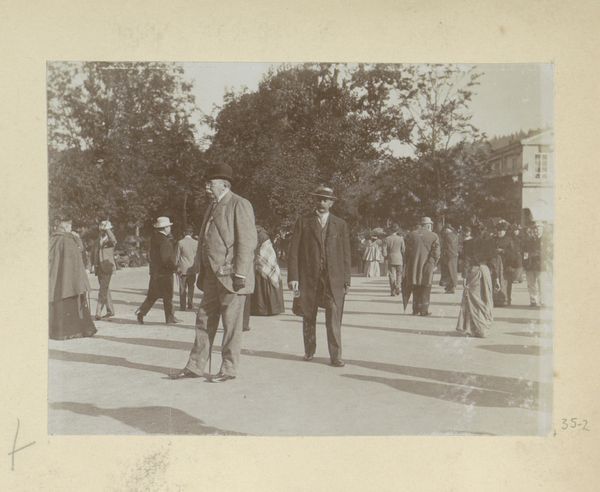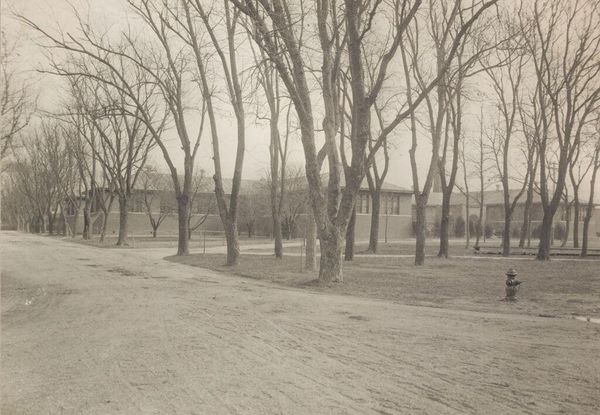
gelatin-silver-print, photography, gelatin-silver-print
#
portrait
#
gelatin-silver-print
#
landscape
#
photography
#
group-portraits
#
gelatin-silver-print
#
ashcan-school
#
united-states
#
cityscape
#
modernism
#
realism
Dimensions: 4 11/16 x 6 5/8 in. (11.91 x 16.83 cm) (image)4 3/4 x 6 15/16 in. (12.07 x 17.62 cm) (sheet)
Copyright: No Copyright - United States
Curator: This gelatin-silver print, simply titled "Untitled", was captured by Lewis Hine around 1910. The photograph resides here at the Minneapolis Institute of Art. What's your immediate response to this, visually? Editor: Bleak. Beautifully bleak. It's like a slow march towards... what? I see that relentless building on the left, the parade of people moving toward… something, but their faces are so obscured. What a sense of relentless movement toward anonymity. Curator: That "something" is very much rooted in the socio-economic context of the time. Hine's work often highlighted the plight of the working class. These individuals likely represent laborers heading to or from the factories or mills. Editor: Ah, the daily grind visualized. The lack of specificity, that hazy rendering of faces – it somehow intensifies the feeling of a faceless mass, each individual subsumed by industry. It's almost cinematic in its grim panorama. Curator: Precisely. And think about the impact of gelatin-silver printing; it allowed for mass production of photographs, enabling them to circulate widely and influence public perception. Hine utilized this to advocate for social change, like improvements to child labor laws. Editor: The choice of medium feels deliberate, not just a technical aspect. By democratizing the image, he’s democratizing the story of these people. Do you see the tension in the scene too? This pull between urban-industrial and agrarian lifestyles; we get it right in the same frame, juxtaposed for us with stark candor, but not sentimentality. Curator: I absolutely see it, particularly how it ties to the Ashcan School. Though his photography has strong realist tones, Hine engaged social issues critically as well, much like his Ashcan contemporaries were exploring similar themes via painting. Editor: So, this single image functions as both art and a call to action? Remarkable. It whispers rather than shouts. Curator: Yes. His photographs were instrumental in bringing about social reforms by visually documenting harsh realities. I am interested as well to think about how this photography impacted artistic movements like modernism. Editor: Seeing this now really resonates differently with the discussions of work ethics today and it prompts a valuable historical pause. A sobering testament to the enduring conversation about labor, worth, and personhood.
Comments
No comments
Be the first to comment and join the conversation on the ultimate creative platform.
